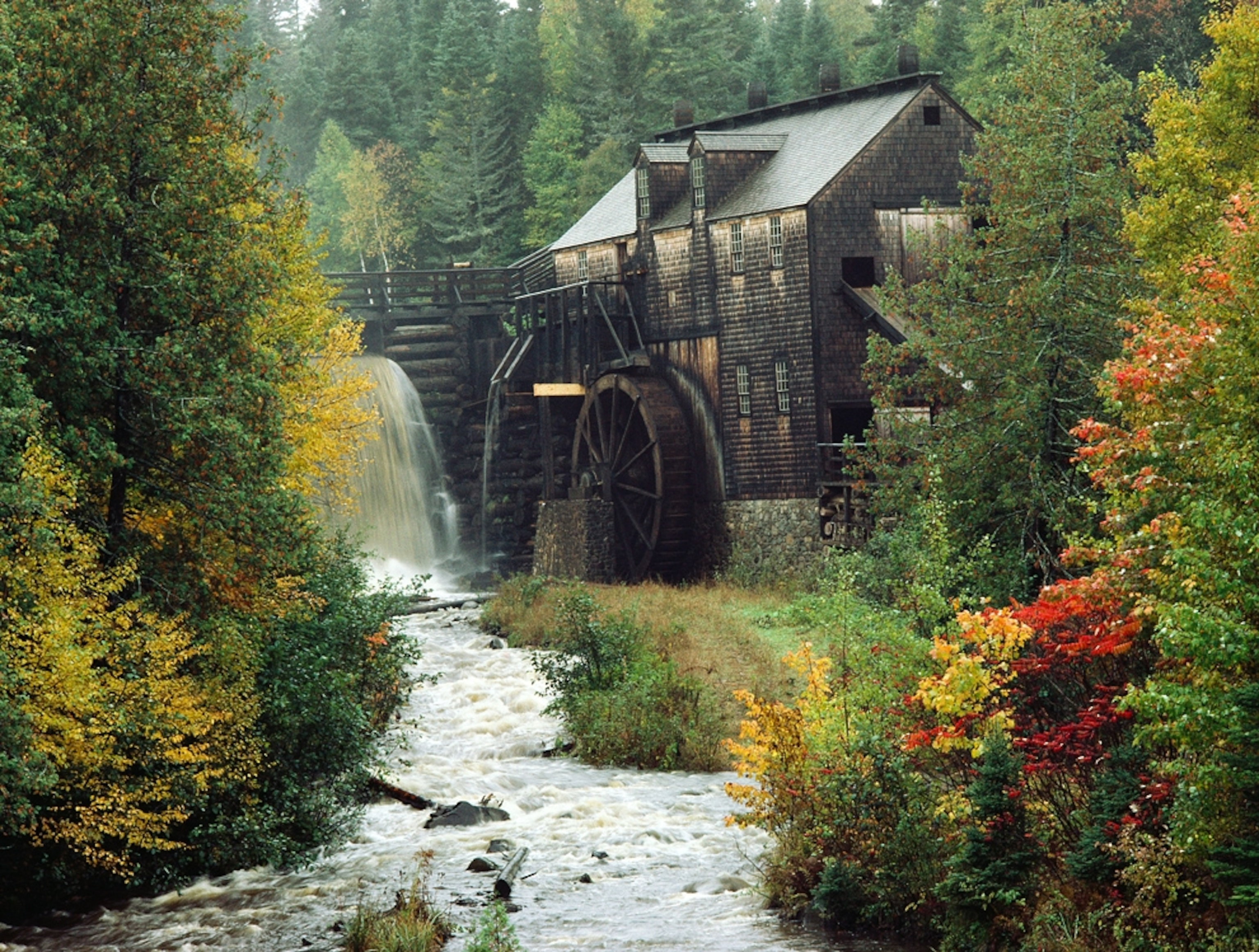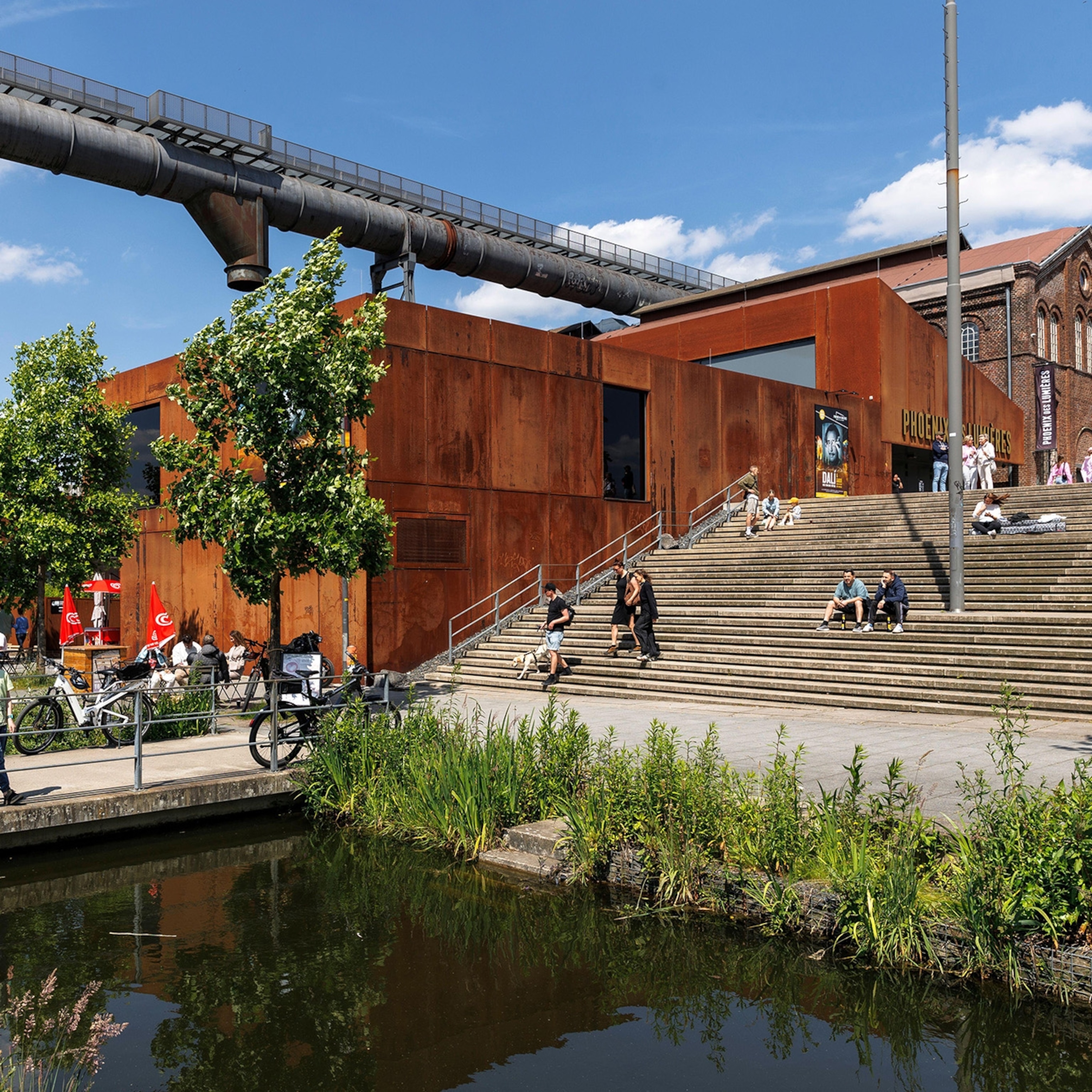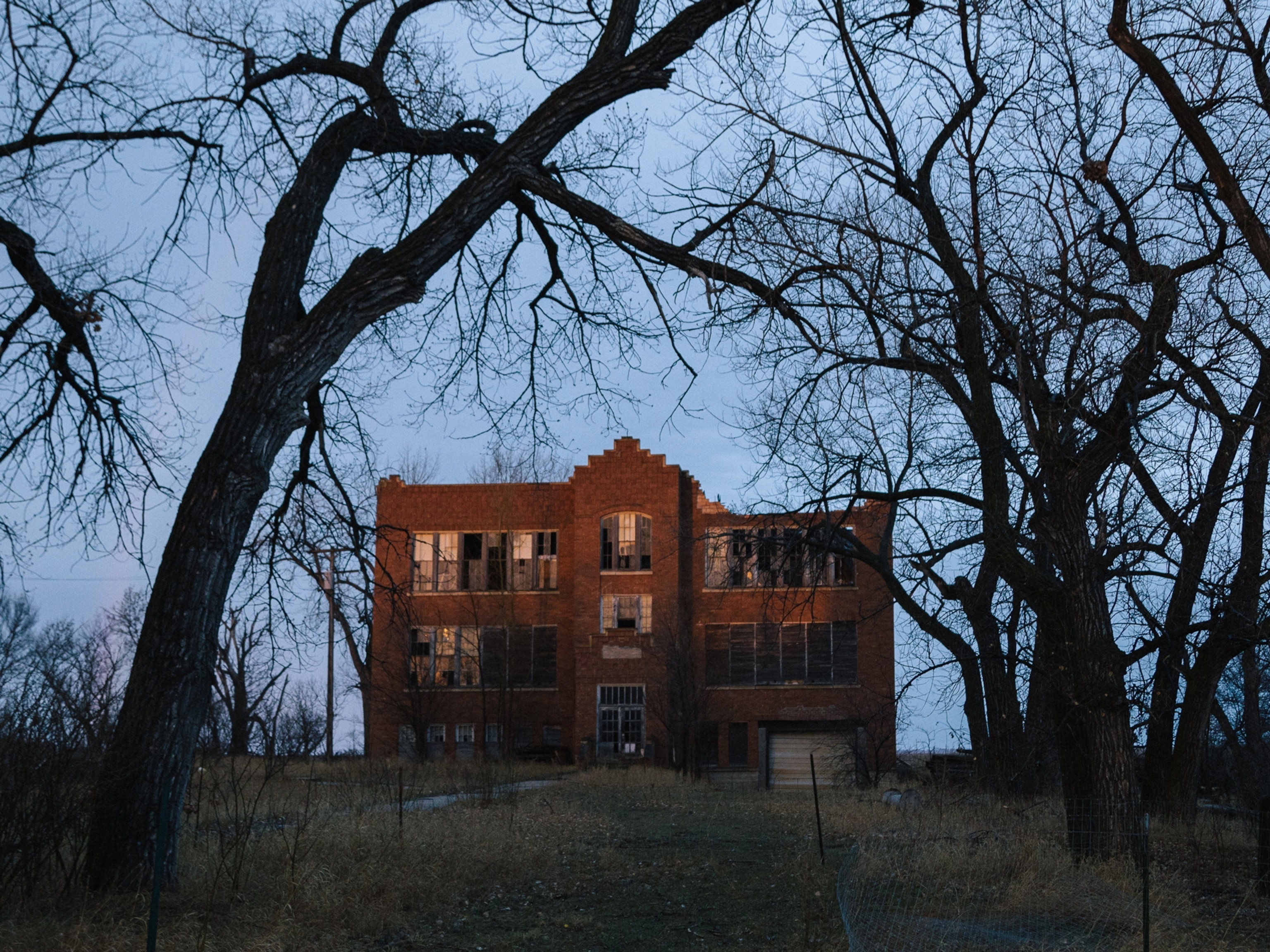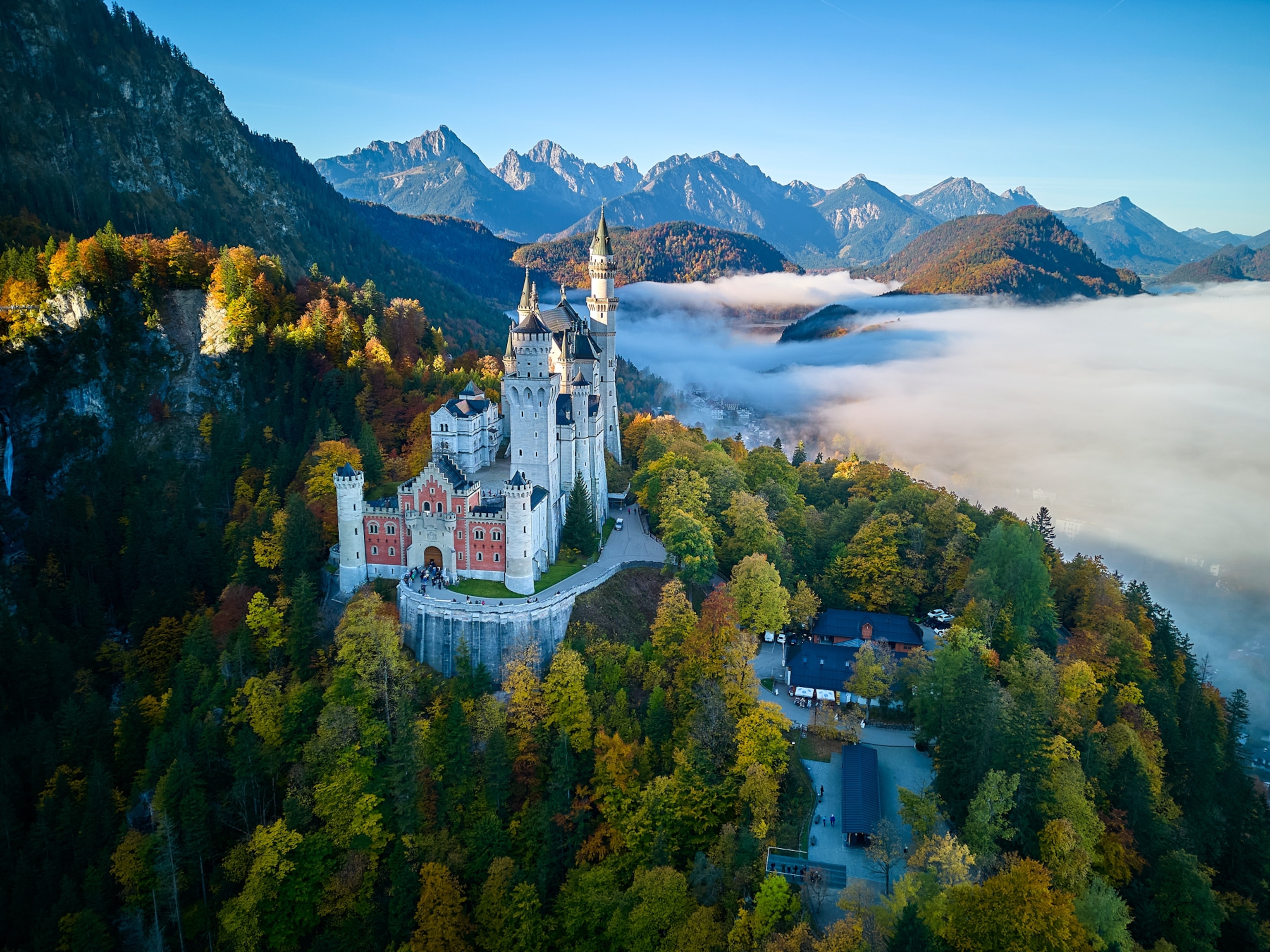
New Brunswick Seeks Natural Gas, and a Safer Way
Joint industry-environmentalist model approach among those weighed in Canada.
This story is part of a special series that explores energy issues. For more, visit The Great Energy Challenge.
On the rugged North Atlantic, New Brunswick has always boasted the most varied terrain of Canada’s maritime provinces—with some of the world’s highest tides lapping at its east coast, and one of its oldest mountain ranges rising in the west. It’s a geography that the energy industry is now eyeing, in the belief that it holds huge stores of natural gas.
New Brunswick (map) is the latest stretch of North America that could be opened up to new energy prospecting, thanks to the combination of technologies that have made it possible to force natural gas out of the soft rock layer known as shale.
(Related: “Forcing Gas Out of Rock With Water”)
Because the province is a frontier for natural gas development, it also is seen as a testing ground for a new approach to oversight of the industry.
One company with a large stake in New Brunswick, SWN Resources Canada, has entered into a unique collaboration with environmentalists. Its parent company, Southwestern Energy of Houston, has been working with the Environmental Defense Fund (EDF) on a set of model standards for safe drilling that they have suggested be considered here. Provincial officials are weighing that idea along with others, while embarking on a fact-finding tour of shale gas hotbeds from the southern United States to northern British Columbia—all to decide whether they can promote a new energy business while protecting their landscape.
“We don’t know if we have an industry here or not; we hope we do,” says Sam McEwan, assistant deputy minister for lands, minerals and petroleum in New Brunswick’s Department of Natural Resources. “But if so, we’d actually like to be leaders, and we feel we’re well positioned to do that. The approach we’re taking is to look at the real issues and what other regulators have done, so that what we put together will be the very best.”
Tourism, Timber and Mining
Outsiders know New Brunswick for the 48 lighthouses on its three coastlines and inland rivers, and for an interior that is more than 80 percent forested. But extractive industry has long been a mainstay of its economy. Much of the Acadian forest has been turned over to softwood plantations for timber, and there are large operations for mining zinc, potash, and other metals and minerals.
“We always knew we had the rocks” for natural gas or petroleum development, says McEwan, but there was no way to get fuel from the rural province (population about 750,000) to markets. But in 1999, the Maritimes & Northeast Pipeline opened to transport gas discovered off the shore of Nova Scotia to the mainland and the northeastern United States. On its way to New England (and through pipeline interconnection, to markets far to the South), the pipeline crossed New Brunswick.
A small Canadian exploration company, Corridor Resources, was the first to plunge in after the pipeline was built, discovering natural gas in Sussex (map) that was quickly put to use at a potash mine. But in the past two years, larger energy firms have sought to tap into much greater stores of fuel in the shale rock beneath New Brunswick, using the same high-pressure water fracturing and horizontal drilling technique that has proven so successful in the United States. In fact, New Brunswick’s western landscape is dominated by the Appalachian Mountains, a range that stretches southward through the eastern United States. A full-fledged shale gas boom is under way in the Appalachian Mountains of Pennsylvania.
(Related: “Natural Gas Stirs Hope and Fear in Pennsylvania”)
As in Pennsylvania and other shale gas states, the prospect of the new energy business has prompted both anticipation of an economic boost and worry over environmental consequences—especially after reports of spills of hydraulic fracturing fluid and drinking water contamination with methane in the United States. Just last month, U.S. congressional investigators charged that, amid lax oversight, gas companies injected more than 32 million gallons (121 million liters) of diesel fuel into gas wells in a dozen states from 2005 to 2009, in apparent violation of the U.S. Safe Drinking Water Act.
“People are really concerned about the industrialization of our rural landscape,” says Stephanie Merrill, fresh water protection coordinator for the Conservation Council of New Brunswick. “We take pride in our rural quality of life, and we live in a part of the country that depends on agriculture and tourism. A lot of people are concerned how natural gas will challenge that.”
Seeking Common Ground
Southwestern Energy, which through its wholly owned subsidiary SWN Resources Canada won a bid last year for the exclusive right to prospect for natural gas over 2.5 million acres (1 million hectares) of New Brunswick—an expanse that covers one-seventh of the province—was keenly aware of environmental conflicts that had arisen over hydraulic fracturing. Like many gas companies, Southwestern thought opponents overlooked environmental benefits of natural gas, which burns cleaner and generates electricity with half the greenhouse gas emissions of coal. But unlike many gas companies, Southwestern thought the industry itself bore a measure of blame.
“We were upset about the way the debate was continuing to move,” says Mark Boling, executive vice president of Southwestern. “People weren’t focused on what really matters—what are the real obstacles to responsible development? And how can we develop workable solutions?
“There was this fear-based campaign on one side,” says Boling, “and on the other side, the industry is saying, ‘Hey, we’ve been doing this for 60 years, don’t worry about it, everything’s going to be just fine.’ But the reality is the public, as anyone would be, is going to be fearful of what they don’t know. There’s a huge vacuum of information about what is going on.”
Several months before the New Brunswick bid was won, Boling reached out to one of the largest U.S. environmental groups. EDF not only had a track record of successful partnerships with industry (including one that scaled back coal plant plans in Texas), the advocacy organization considered climate change its top priority. Boling wondered whether they could find common ground in a call for better safety standards.
EDF senior policy adviser Scott Anderson took up the offer, although he declines to offer a ringing endorsement of natural gas. He said although the fuel certainly releases less carbon dioxide when burned than coal, EDF continues to be concerned about issues such as the fugitive emissions during gas processing and handling.
“Our philosophy at EDF is we don’t pick winners,” Anderson said. “We’re not fans of coal; we’re not fans of natural gas. Whatever the technology and fuels are that are relied on in the marketplace, we see our job as making sure they are regulated in a way that minimizes the environmental footprint.
“However you look at it, it’s clear that natural gas is going to play a big role in our energy portfolio for a long, long time,” Anderson says. “And it’s also clear that natural gas development has caused far too many problems for public health and the environment.”
Boling and Anderson found some key issues on which they agreed. Primarily, they decided, better gas well standards were needed to protect underground drinking water from contamination—especially by methane, the key component of natural gas. This concession sets Southwestern apart from many in the industry, who characterize the risk as nil.
The issue gained wide attention due to the memorable scene of a Colorado homeowner lighting his tap water on fire in the Oscar-nominated documentary film, Gasland. The gas industry advocacy group, Energy In Depth, points out that a Colorado state investigation found that methane was naturally occurring, not related to gas drilling. But Boling notes in other instances, including in Garfield County, Colorado, and in Dimock, Pennsylvania, investigations did tie drinking water contamination to gas drilling. (The environmental group Riverkeeper recently compiled this summary of incidents.)
“Yes, there is the possibility if the well is not constructed properly, it can allow natural gas to migrate into aquifers,” says Boling. “This has happened.”
A Model Approach
So Boling and Anderson spent months hammering out a draft set of model regulations aimed at ensuring the integrity of gas wells and protecting underground water sources that are sources or potential sources of drinking water. Drawing on some U.S. state regulations and industry best practices, they focused on the steps that drillers should be required to take to ensure that the steel casing of the well hole, and the cement that surrounds it, are set into the ground properly, and in a way that adequately protects the groundwater. (To view this stage of the process, see frame 3 of National Geographic interactive, “Breaking Fuel From the Rock.”)
Their model rules would require disclosure of fracking chemicals; secrecy has been a contentious issue, but Arkansas and Wyoming recently have enacted disclosure rules with provisions to protect trade secrets.
Boling and Anderson stress that additional parties, who have not yet gone public, are joining the effort to forge an industry-environmentalist consensus on regulation of fracking. Both the discussions and the draft continue to evolve, they say.
But they note that the model rules as they stand today go further than most of the U.S. state regulations now in place. For example, Pennsylvania recently upgraded its rules on well construction standards. But among other things, Anderson says that Pennsylvania still falls short in failing to require gauges for monitoring well pressures and relief valves on wells for when pressures get too high. Anderson also says that gas companies should have to submit cementing records for each well to state authorities, and in the case of a mishap investigation, the state should take the lead responsibility—not the gas operator.
The work by Southwestern and EDF does not cover the many environmental issues that can happen at the surface of a well site—how to prevent spills and handle the polluted fluid that returns to the surface. But they view it as a valuable achievement to reach an agreement on subsurface pollution issues, and on January 20, they unveiled the draft model rules in a presentation to New Brunswick Premier David Alward and members of his administration, and later at a public forum at the University of New Brunswick.
“The whole effort is to say ‘Here’s environmentalists and here’s industry, and we’re coming together, and we see a solution, at least to the subsurface issues, that we think is workable,’ ” says Boling.
More Work Ahead
Merrill, of the Conservation Council of New Brunswick, says that proposed rules to tighten standards on well drilling and integrity are a positive development. But she says that much more work is needed. “Potential water contamination is a huge issue, but I want to emphasize that people are also worried about infrastructure, road systems, air quality, the future of pipeline and gathering and compressor stations and noise,” she said. “Our position is that we still need to have the entire package of subsurface and above-surface issues controlled for before we move ahead with any development.”
McEwan, of New Brunswick’s natural resources department, says the Alward administration feels comfortable with existing legislation to deal with the level of exploration now under way in the province. Development is at such an early stage that no wells are expected to produce during the three-year agreement with Southwestern, a time when the company has committed to spend $49 million to explore the acreage’s potential.
The province also has a new process for oil and gas development, called a phased Environmental Impact Assessment, designed to identify potential problems early on.
But McEwan says provincial officials expect they will have to ratchet up oversight if the business does take off, which is why they were interested in the Southwestern-EDF approach.
“It was very refreshing to them working together to come up with solutions for some of these issues instead of being at extreme odds,” he says. “What they produced is a document we will review in great detail as having potential to assist us.”
But provincial officials and technical experts also traveled last month to the Fayetteville Shale in Arkansas (where Southwestern is the largest operator), and will head in March to tour the shale gas operations in the Horn River basin in British Columbia. McEwan says New Brunswick officials are trying to get a full overview of the business, talking to landowners, interest groups, and others about their concerns. “We heard lots about things that have gone wrong, and this could be an opportunity to learn from other people’s mistakes,” he says. “If this is going to be done, it’s going to be done right.”
(See National Geographic photography: Hopewell Rocks, New Brunswick, Canada, 1990)







